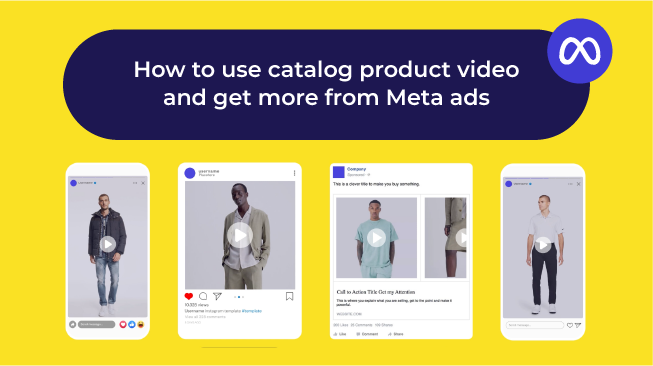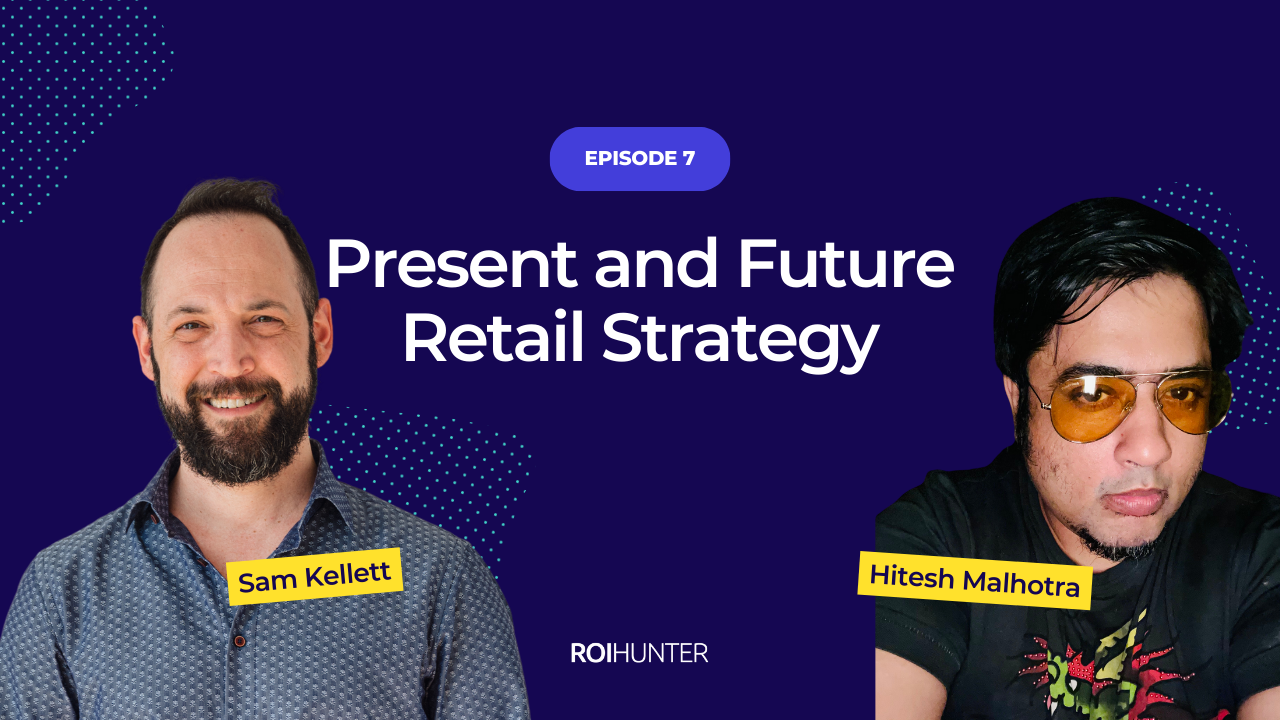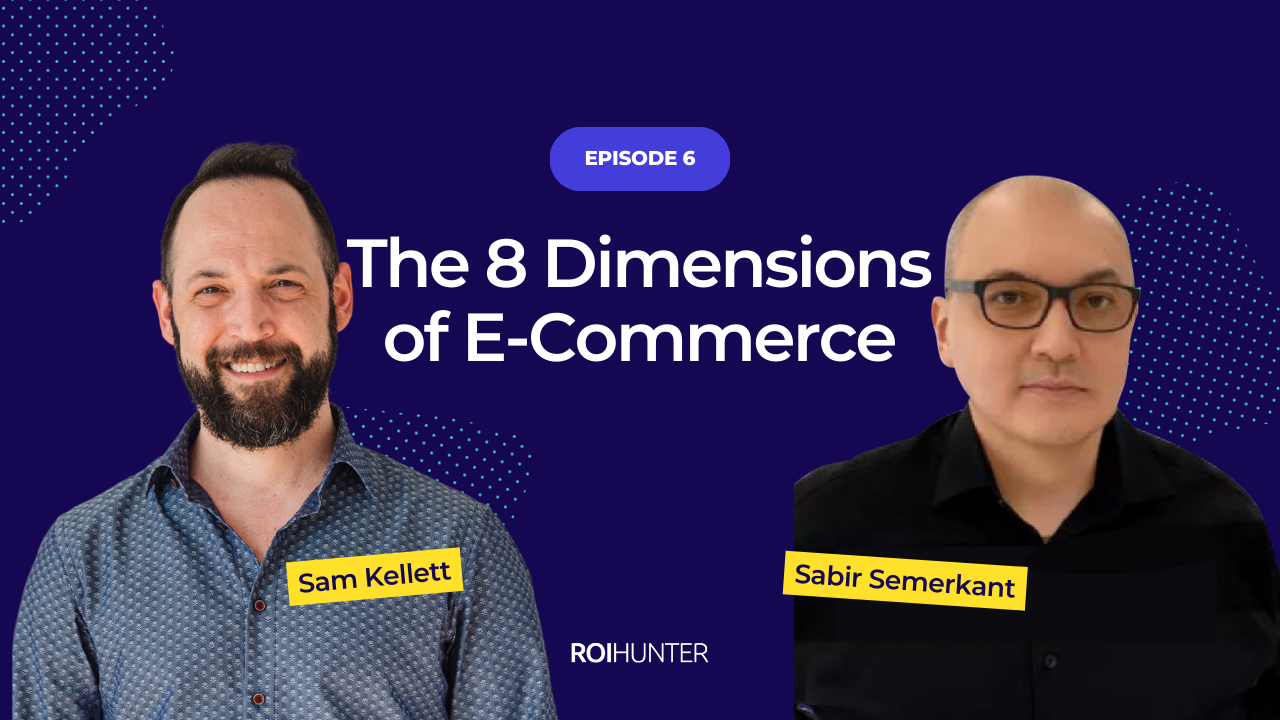Not in the mood to read? Listen to this interview:

Performance Marketing in e-commerce companies has for the longest time revolved around the traditional train of thought - Campaigns, Ads, Creatives, Channels and other things that make up the marketing machinery. This means that the one thing that actually makes these companies the money to sustain and scale often becomes an afterthought - Products.
Make no mistake, products and product-related data is seldom used in marketing decisions not because companies don’t want to use it, but because it is incredibly hard to do so. Data is often siloed across the organization, leaving it disconnected. In fact, e-commerce businesses around the world lose almost 20% of their revenue due to poor data quality
As an industry-leading Product Performance Management (PPM) platform for e-commerce companies, ROI Hunter set out to solve this difficult problem. In addition to helping global e-commerce companies launch Facebook and Google Ads campaigns at scale, and generate beautifully-designed templates and videos on the fly, we’ve enabled our clients to deeply understand how their products perform in the little-known wilderness of Facebook and Google’s algorithms.
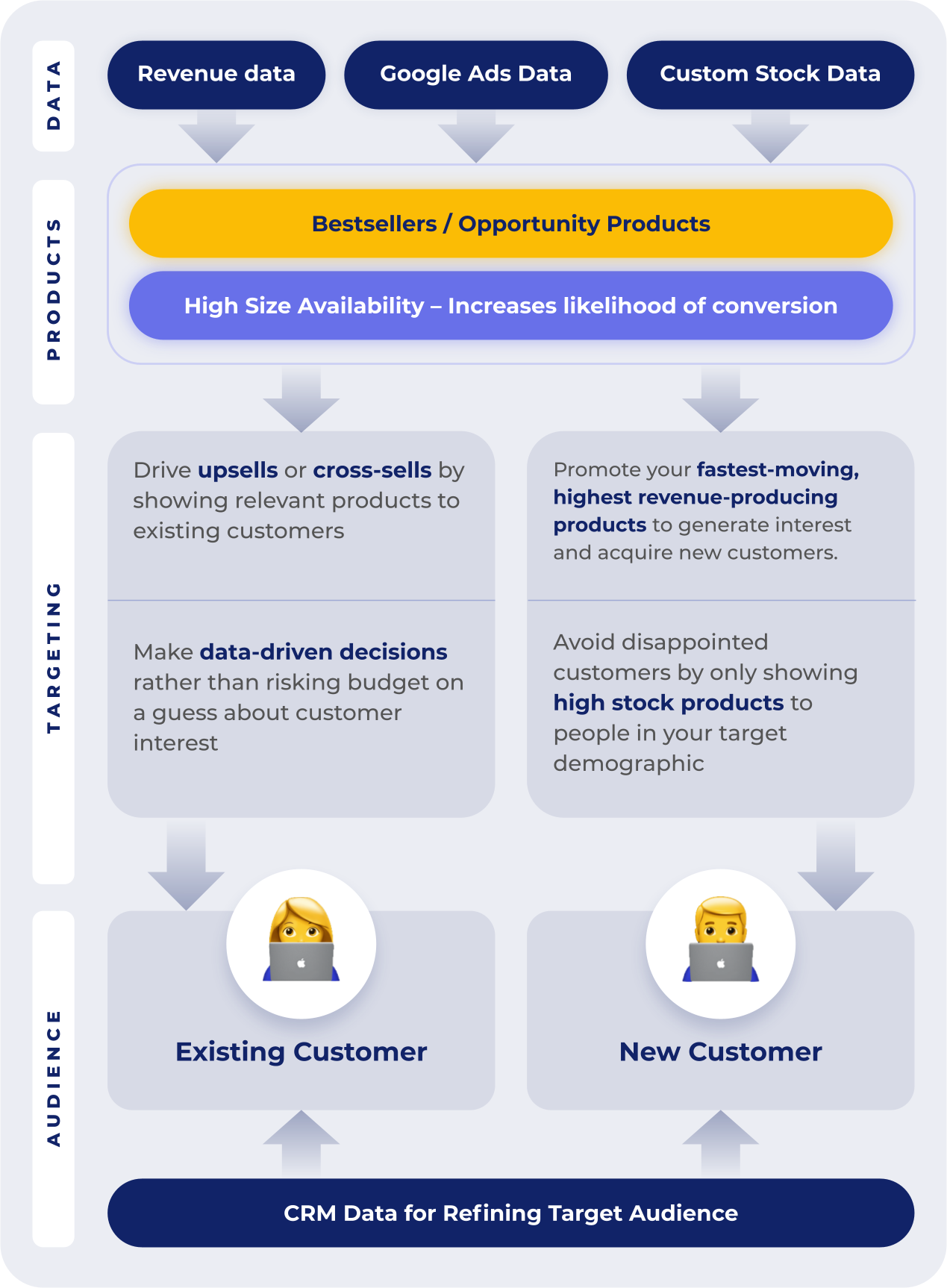
Building a PPM platform has been a continuous effort that wouldn’t have been possible without the grit and unflinching commitment from the team as well as the support of our customers who we’re proud to call our partners.
We’ve gathered two members of our Product team:
Adam Rippl - Product Lead managing platform support for new data sources and channels
Erik Werner - Technical Product Manager for Platform Insights and Data Analytics
Today we’re going to hear from them about who they are and the work that they do at ROI Hunter. We’ll also talk about e-commerce trends, learnings and exclusive nuggets of information that you might find useful for growing your company.
The transcript below has been edited for brevity.

Samuel:
Alright guys, so tell us who you are and what you and your teams do here at ROI Hunter. I just want to do a little introduction to get to know you guys a bit. Adam, why don't we start with you?
Adam:
Hi, I'm Adam. I'm a Product Manager at ROI Hunter. Originally I was working on our offering for SMBs. Now I'm transitioning into a new role where I handle both integrating Google Data and Google Ad Buying offering on ROI Hunter. And I'm also responsible for the analysis of product data within the platform. So that's, that's roughly what I'm up to at the moment.
Samuel:
Great to meet you, Adam. And Erik, if you could introduce yourself.
Erik:
Hi, everyone. I'm Erik. I'm also a Product Manager. I'm also a life-long marketer, problem solver, and thinker. So with all these three things combined together in ROI Hunter, I am probably the go-to-person for some of the challenges that our advertisers see. And I like to find out-of-book solutions, and lately, we've been digging into dynamic ads so much from various angles to identify challenges from all points of views. So we're working on the analysis of dynamic ads and getting these insights to our advertisers.
Samuel:
Great, great. Well, you know, to start with let's just do a little overview. Could one of you share what exactly a Product Performance Management platform like ROI Hunter does and what pain points it actually solves for e-commerce businesses?
Erik:
In the world of e-commerce, products are the bloodline of the business. Everything revolves around the products. And with a Product Performance Management platform, we are trying to put this perspective into the company’s advertising activities. So it's taking a little step back away from campaigns, ad groups and budgets. And taking the perspective of products and deciding where we promote them and where we show them to people.
Samuel:
Okay, so it's sort of it's centralizing everything around the product, making that the focal point?
Erik:
Yes, yes. product and marketing, like the combination of the two hand in hand, not just focused on the product itself. But, again, not just forgetting about all of the business and marketing functions that work hand in hand.
Samuel:
And are there any specific pain points that you think are present in e-commerce businesses today that this is the answer for?
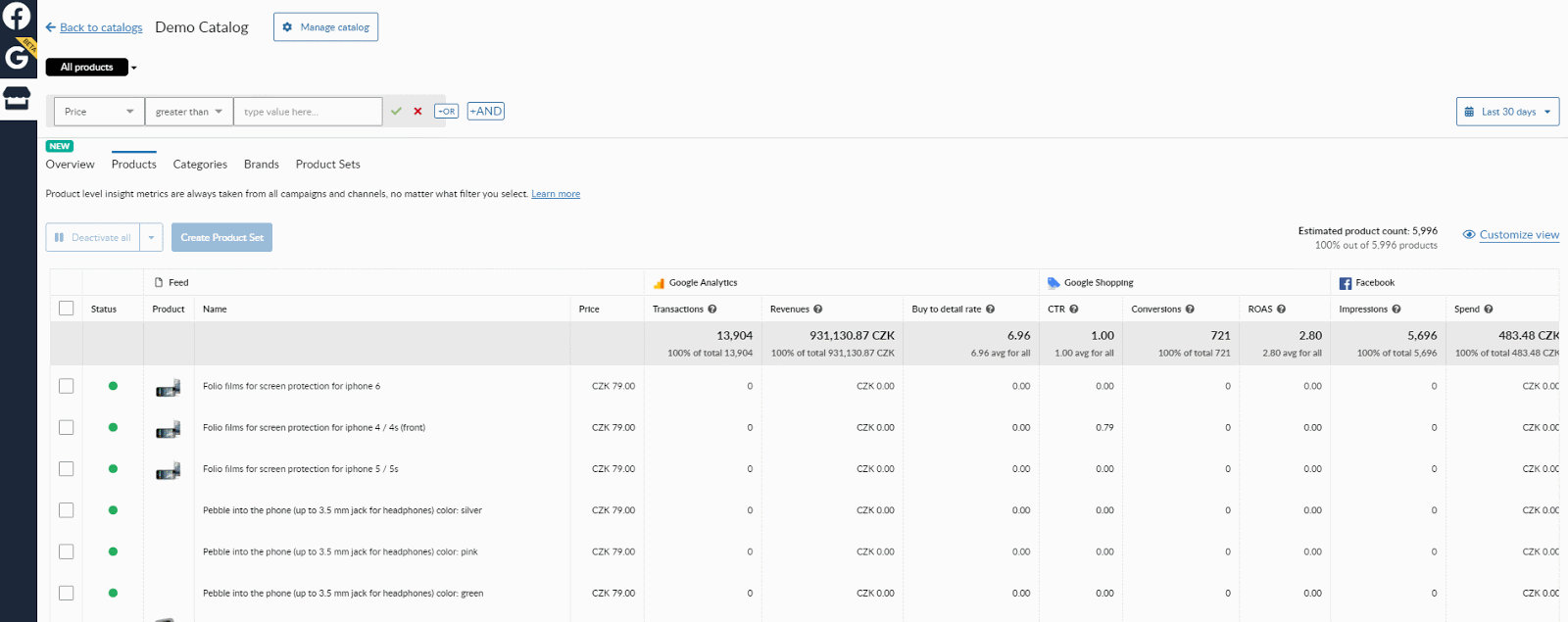
Erik:
Yeah, definitely. e-commerce businesses have lots and lots of products in stock. It's very easy for them to just put new products on their website. Especially for marketers it is really hard to dig through that and find the gold and in these vast stockpiles of products. I think that is a crucial pain point. I think some marketers have been playing it safe, some have resigned and just let the machines do everything. And we are trying to find the golden path, I think.
Samuel:
Alright, the golden path to the right products. Nice!
Well, let me see if I can hear a little more from you, Adam. Are there any particularly interesting use cases that you've dealt with with the PPM platform? What have really been the use cases that you've seen to be proving the PPM model?
Adam:
To add on top of what Erik was saying about putting the business level data into the hands of marketers. One of the examples would be leveraging stock levels. So basically like adding this business level data to marketers has helped them. We’ve had amazing results and we’ve got plenty of success stories.
This insight is really helping marketers make smarter decisions and has helped them optimize their campaigns in a smart and convenient way by optimizing a product set or product filter, all done automatically. And it actually works quite nicely.
Samuel:
Integrating stock level data with that - how exactly does that work? What are you using that data for?
Adam:
The heart of our product is the product feed. We work with the product feed on Facebook, and we work with the product feed within Google as well. And we can enhance this product feed with additional information. So we can take the stock-level data from your inventory management platform or from your e-commerce platform, and then append this information to the feed. That allows you to run campaigns leveraging this information. We have something called the Size Run Score, but I think that Erik would be the best person to share more about this.
Erik:
You know, advertising really works. And if you keep showing people some products, they're going to buy them. So if you put money behind some products, then these products are more likely to sell out, and they sell faster. At what point should you be considering to stop selling these products? If you keep pouring people onto the product, gradually your stock levels are going to go down. Your size variants, colors, different options that you have for the product are eventually going to become out of stock. And then people are going to have a bad experience coming onto your website
So, with the Size Run Score, we can set a rule that if a product has less than half of the sizes in stock, we're not going to promote it anymore. And this way, we can ensure that people that come into our website and discover you through your ads are having good experience. And we have seen really good results by simply creating a welcoming experience on the first go.
Samuel:
Well, so let me ask you then, because one of the things that I find most annoying when I'm shopping online, is if I find an item that I think is perfect. I click on it, because it was, you know, advertised to me, and then they don't have my size in stock or they don't have it. Is that what this is going to prevent?
Erik:
Exactly! Yeah!
Samuel:
Well, I like that. Now, you mentioned automation a little bit and I know that cross channel data and automation have often been cited as some of the key drivers for ROI Hunter. So could you tell us a bit about how all of this cross channel data that you're collecting from these different areas for the PPM platform works in tandem with all of your automation features.
Adam:
It’s really a plug and play solution. Since we have the feed, we're basically tying everything to the product. So we can get information from Google Analytics, pulling information from Facebook, from Google Shopping, and many more. Size Run Score is one of the examples where we actually are integrating business-level data.
Samuel:
Via a Custom source, right?
Adam:
Yeah, a custom source can also be used to connect margin data. So we can actually optimize towards profit, not just revenue. We put everything in one place, tie everything to the products, and then allow customers to filter based on these kinds of information in the feed. It sounds simple, but there's a lot of magic that is happening in the back end to make this a really robust solution. It nicely helps advertisers, like making smarter campaigns by breaking silos between different departments.
Everybody within the company understands products. And now they see similar metrics from Google and Facebook, they can use that information that they didn't have before. So we are having conversations with the Facebook team who are able to see (Google) Shopping Data. So they can see that the seasons are changing and we can see upcoming trends within shopping data. As it's search-based, so it basically shows that there's a demand for a certain category. So then the Facebook team can react to that, and can use the information in their Facebook activities. So I think it's not only about making smart product sets, but it's also about putting this data back to the company, and making sure that everybody gets the same insight.
Samuel:
So the PPM platform helps you get the data from all the channels integrated together, and then you can kind of just use that main source, rather than having to skip back and forth and copy paste something from here and put it there and make sure it all works?
Adam:
Exactly, yeah. Putting data in one place is one part of the story, the data can be quite overwhelming. So where we also are helping is to get insights from the data, like what is actually happening with my products, how it is influencing the performance of campaigns. And that's why we try to analyze the data along with the client, and try to suggest use cases where they can simply plug and play and run campaigns in a smarter way.
Erik:
I think it has got to do a lot with coordination of different parts of the business all working together. One of the really nice use cases that we came across - imagine that there is probably a team in your e-commerce business that sets prices based on a pricing strategy. And the prices play an important role in all of the channels. Some products are said to have lower margin, some may be the best place to buy, you want to attract people and that's your strategy for some set of products. And for others, you're not such a good deal and you want to get the margins back. If this information doesn't make it to the marketing team, then they might be stepping one over another promoting the products which don't have good price and then the response to that is low.
So one example is you can plug in data around products which are marked with really good prices and then you can be sure that you are promoting these products. You can even set a creative that highlights this price that is more visible in the creative. This way you can make sure that different parts of the business are working together.
Another use case - In a lot of businesses, Facebook is not so big a channel for them. Then compared to search and shopping campaigns, it's still the younger sibling in a way. And when you try to scale this up. It's good not to start all over, but you have a lot of data about the revenue driving products and other channels. And you can make sure that you are using these products to build your presence in the newer, smaller channels. So you know, you start with a good foot.
Samuel:
Okay, now, one thing that I'd like to get into. Adam, I know you mentioned smart product sets a little bit earlier. But now Facebook and Google have very robust, powerful algorithms. But one of the things ROI Hunter has talked about and written about is that there's more that ecommerce companies can do to achieve scale and profitability. So I guess, how would that enhancement look? How would you enhance the Facebook & Google algorithm with ROI Hunter?
Adam:
What's really happening in the market is amazing for advertisers, like the abilities of Facebook and Google's algorithms are immense. This is something that we as a company can’t complete with, and we don't want to. We’d rather complement those algorithms. And that's where we sort of can blend all this information and add something on top of that. And obviously, using that business-level data, inventory levels, this is information that Facebook or Google doesn't know about. If you don't have it in the feed, they don't know what your stock levels are. So this is where we come in handy and we try to help advertisers to build something that helps these algorithms understand - Here are products that need more attention and the rest don’t. So it's influencing how the algorithms pick the products.
Erik:
Machine learning needs to be fed data to be trained. And within marketing algorithms, that data costs you money. When you're trying to find the best products you have, the algorithm is testing which one of these products is the best fit for the audience, you actually have to serve the products and impressions and that costs money. Working the auctions to get the data first. So by giving Facebook the whole size of the longtail products that you have, you are basically just paying to find out that there are products that are not worth being promoted.
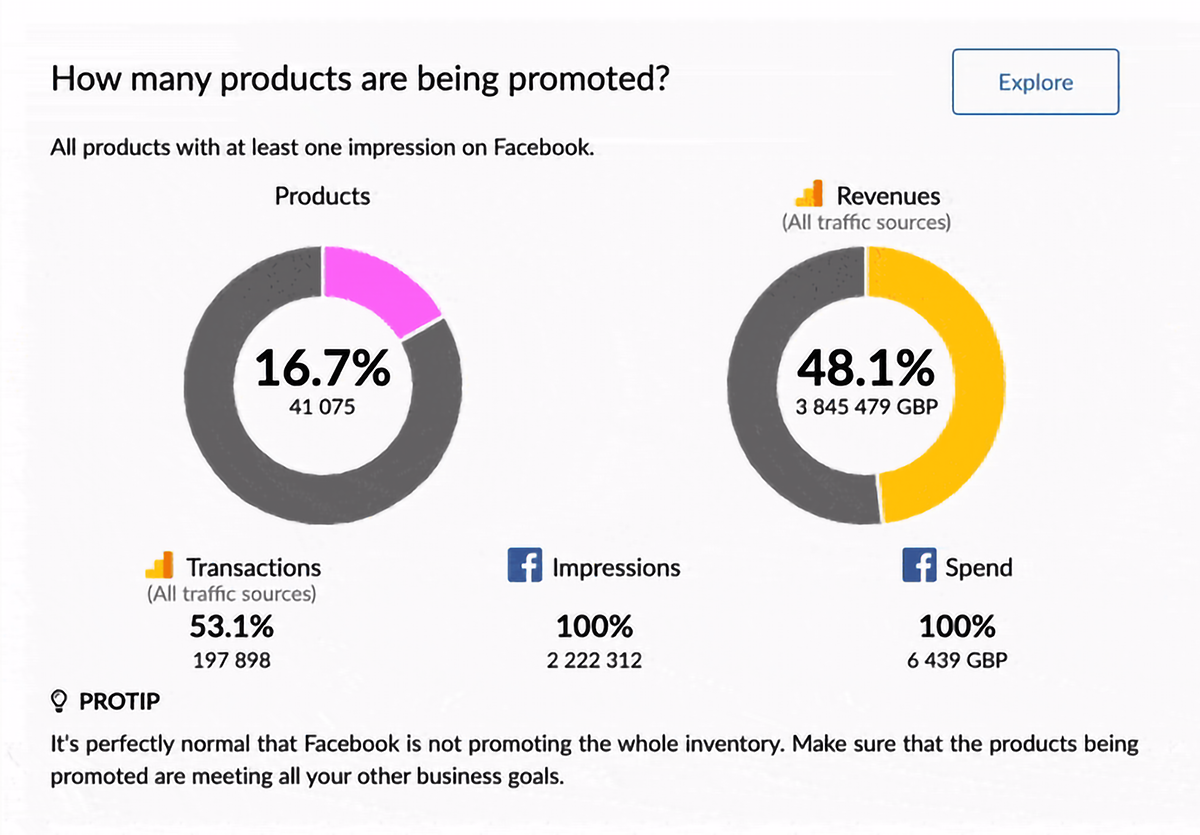
However, I can narrow this down, because I know that some of these products are a good start for the algorithm and they have a good track record. I can make sure that the algorithm picks these first, and I'm not wasting that much money on the learning. And at the same time, I am not risking that Facebook settles for longtail products because at some point it has to stop learning and it needs to start delivering. So the algorithms just settle for something that works and simply goes with it.
Samuel:
So ROI Hunter is just kind of helping it along by getting that information from the other channels, and then helping the algorithm to use that to find the actual best products without wasting your budget.
Erik:
Yeah, I think this is in line with how humans can complement machine learning and Artificial Intelligence. And even though you know, being a digital marketer is one of the most sought after professions or skills in this world, it's also one that is very susceptible to being replaced by algorithms. If being a digital marketer means changing budgets and, and launching ads and tweaking creatives, then all of these tasks can be automated very well. So what I think digital marketers should become are these humans that give the boundaries to the algorithms and lead them to the correct way.
All the algorithms need is a good brief. And I think that advertisers that work with ROI Hunter are in a better position to be this strategic person that drives the decisions instead of being super busy with managing hundreds of different ads and campaigns.
Samuel:
Alright guys, I have one I have one last question I wanted to get into and this is where I asked you to predict the future. So the question is, should I buy GameStop stock? No, I'm just kidding.
Question is what upcoming digital marketing trends are you are expecting to see, and based on those, how do you think the ROI Hunter product will be evolving to be in line with them?
Adam:
One of the trends that is happening is consolidation. So we can see there are a lot more players in the digital marketing sphere. We see TikTok, Pinterest, Snapchat and all these companies are now offering feed based campaigns to advertisers. However, it's quite overwhelming for teams within one ecommerce company to handle everything in different places with different platforms.
So that's where I I feel like we're probably getting consolidation and there would be a huge demand for more companies like us. That would make it easier to manage everything from one place. This cross channel data gets even more exciting where you are plugging more and more channels to it.
Samuel:
Okay, great. Erik, anything you wanted to add?
Erik:
Apart from what I was mentioning about finding balance between machine learning and human genius is actually the topic of privacy. And I, you know, as a consumer, and a citizen, I think this is really good for the world and the ecosystem. I think it's important to raise these topics, and what is going to be important is that first party data is going to be more important. Also, any data that is not tied to people who are not your customers, but are just passing by, is going to become more important. I think that's what we talked about as well with the coordination of, of your activities and your data. I think where ROI Hunter can be really good help is making sure that the data which is not personal, helps you drive better decisions.
So, we are not working with audience data at all. At ROI Hunter, we are taking the perspective of products, and there are no issues with GDPR in this approach. But in a way, in the 21st century, people are what they buy. We identify as consumers and the things that we purchase, actually tell a big story about what lives we live and who we are. And so I think it's completely possible to get away from people tracking, and go more into understanding this stuff that you sell, and why you sell it. And you know, you can use that information instead of gathering private information.
Samuel:
Okay, so gather all the information you need about the product and why that's a saleable asset, rather than digging into the customer.
Erik:
Exactly, yes.
Samuel:
Interesting. All right. Well, guys, thank you so much for taking the time to to sit down with me and talk these things through. So Adam and Erik, thanks again for coming. And I'll talk to you guys again soon.
Erik:
Thanks, Sam. You've been a really good host.

